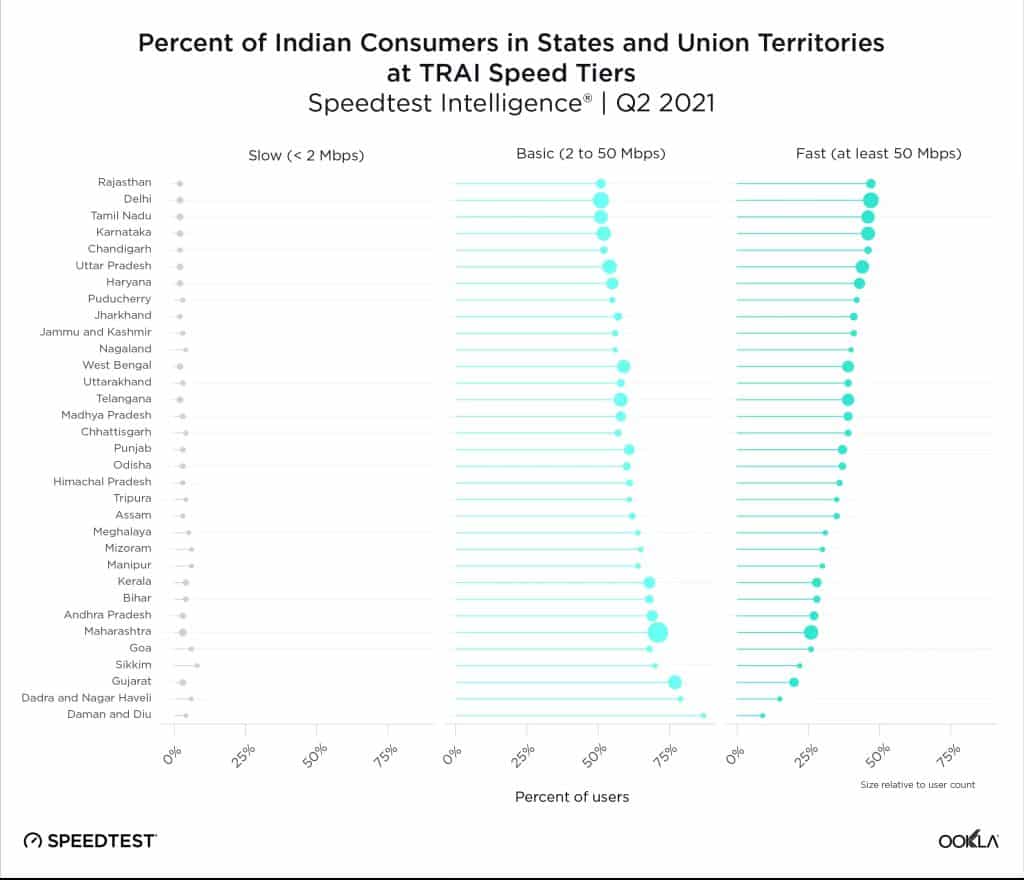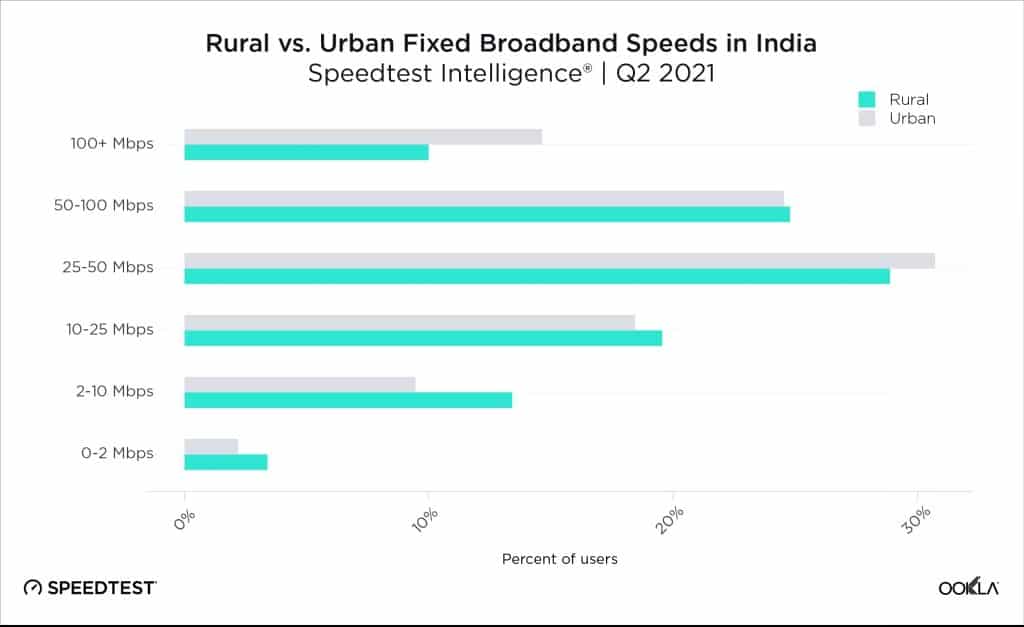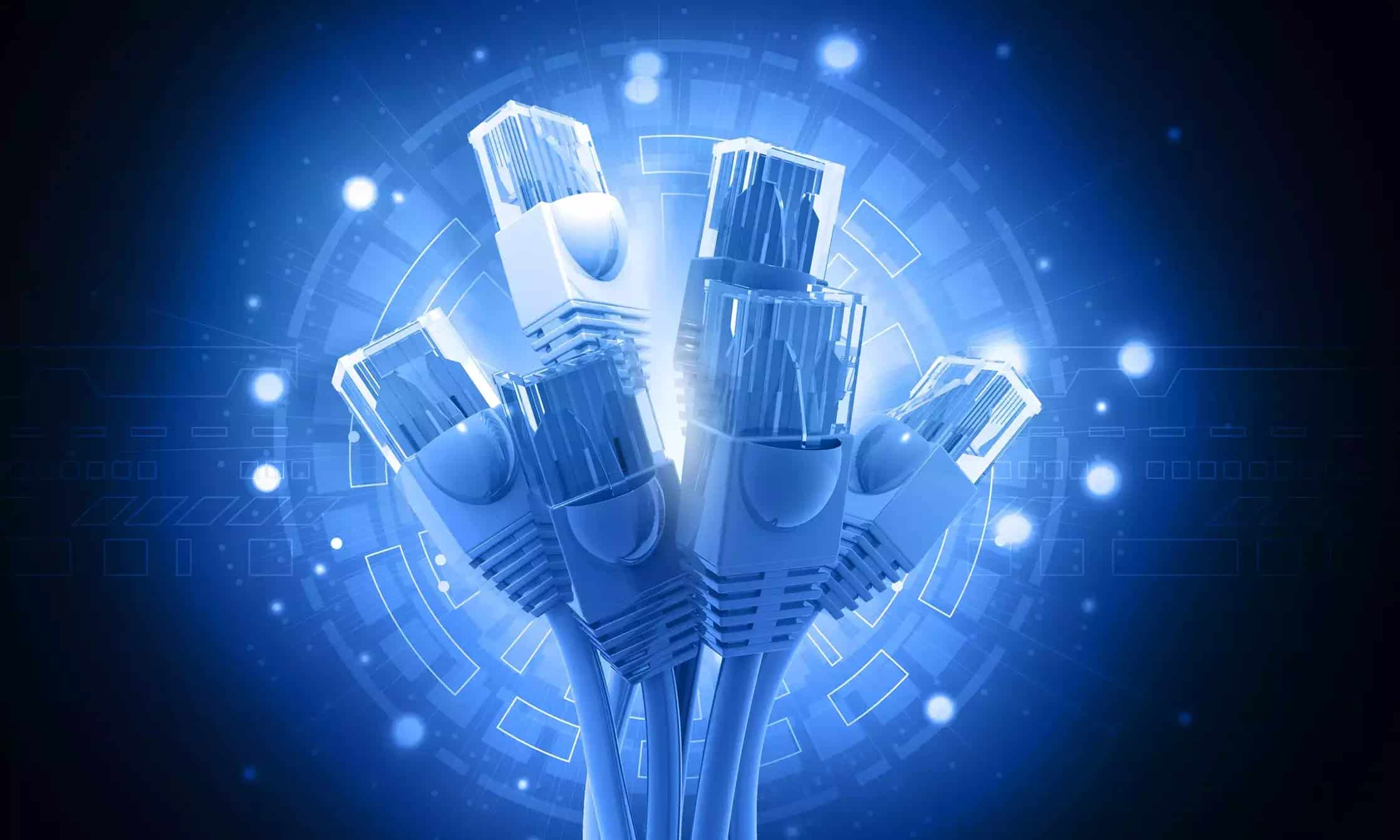Over 97.5 percent of fixed broadband connections in India meet the 2Mbps speed threshold recommended by the Telecom Regulatory Authority of India (TRAI) earlier this month, telecom network intelligence firm Ookla said on Thursday. The regulator proposed to revise the minimum broadband speed to 2Mbps from 512Kbps.
Ookla stated that the revision didn’t shift the needle much. As per the data shared by the Seattle, Washington-based company, as much as 60 percent of the Indian broadband consumer base received the basic 2- to 50Mbps speeds in the second quarter of 2021.
In a report, Ookla said that only 0.5 percent of the fixed broadband subscribers did not have access to the 512Mbps speed that TRAI recommended to increase to 2Mbps. TRAI categorised fixed broadband services into four speeds: namely Slow, Basic, Fast, and Super-Fast.

Ookla’s data, based on its proprietary Speedtest Intelligence platform, shows that 60 percent of Indian broadband consumers came under the Basic category in the second quarter, with speeds not more than 50Mbps. However, 2.4 percent of the broadband base fell in the Slow category, with less than 2Mbps speed. Finally, 36.7 percent of the total broadband population in the country had ‘Fast’ speeds of between 50 and 300Mbps in the quarter as per Ookla.
Ookla Speedtest data further states that India’s new broadband speed categories varies widely from state to state. States such as Delhi, Rajasthan, Tamil Nadu, Chandigarh and Karnataka are falling in “Fast” category. These have more than 50 Mbps of speeds.

Over 70 percent of connections in the States of Gujarat and Maharashtra falling into the “Basic” speed category. The availability of “Super-fast” broadband in India is very low. It ranges from a high of 1.5 percent of connections in Delhi, to 0 percent in Sikkim.
The Urban-rural performance gap in India is also not as wide as expected. This is despite the low penetration of fixed broadband in rural areas. For the Indian government and TRAI, the said move will provide much-needed visibility into the state of broadband within India. It will be able to track performance in a better way. Moreover, it will enhance the reach of different access technologies, and to target and tweak remedies and incentives to spur further adoption.
Also Read:








